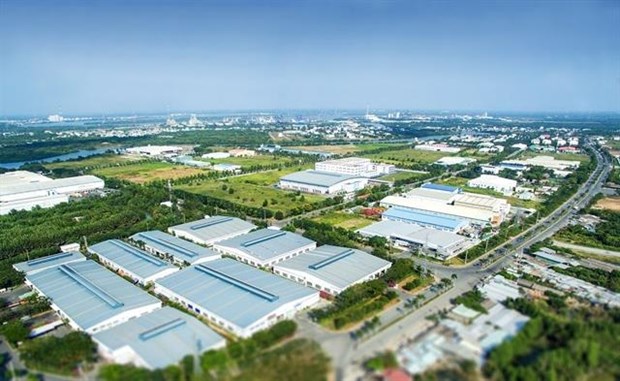Many foreign companies move factories to Vietnam: Savills
 Many companies are moving their factories from other countries to Vietnam, showing the potential for strong development of industrial real estate. (Photo courtesy of Savills Read)
Many companies are moving their factories from other countries to Vietnam, showing the potential for strong development of industrial real estate. (Photo courtesy of Savills Read)HCM City (VNS/VNA) - Many companies are moving their factories from other countries to Vietnam, showing the potential for strong development of industrial real estate, according to Savills Vietnam.
Savills Vietnam made the statement at a conference on September 4 in Ho Chi Minh City to release its white paper on Vietnam’s industrial real estate in the first half of this year.
They included many factories from China operating mainly in the fields of electronics, textiles, footwear and spare parts production, such as Hanwha, Yokowo, Shuafu, Goertek, Foxcom, Lenovo, Nintendo, Sharp, Kyocera and Oasis, according to the report.
“Although occupancy in key provinces grew year on year, available land coupled with an array of upcoming projects has seen foreign companies significantly increasing investment in Vietnam,” John Campbell, Senior Consultant, Savills Vietnam Industrial Services said.
“Manufacturers are showing interest in the Central Regions while developers are actively converting agricultural land to industrial usage, guaranteeing additional supply.”
The industrial sector is growing strongly with a tenfold increase in foreign direct investment (FDI) over the last decade. Good land supply is facilitating incoming manufacturing projects and the rise of rental options with ready-built factories (RBF) and built-to-suit (BTS) solutions. Vietnam must be more selective with projects to move up the value chain, improve competitiveness and ensure sustainable growth.
Low labour costs and government incentives, particularly preferential tax rates, will continue to be critical drivers of FDI. However, to maintain the transition to higher-value industries, Vietnam must focus on the quality rather than the number of investments.
By enabling the latest production technologies and increasing workforce training, the government is actively easing qualms around viability, labour shortages and rising costs for a more transparent business environment.
According to Savills Vietnam, the US-China trade war, additional investment and new free trade agreements have all had a positive effect on Vietnam’s industrial sector.
The Comprehensive and Progressive Agreement for Trans-Pacific Partnership (CPTPP) entered into force in January while the EU - Vietnam Free Trade Agreement (EVFTA) was signed in June 2019. This historic and ambitious agreement will eliminate 99 percent of customs duties and has raised interest in industrial property.
Regional Comprehensive and Economic Partnership (RCEP) negotiations are underway and expected to be finalised at the end of 2019. The agreement will increase cooperation between ASEAN countries and the six Asia-Pacific states with existing free trade agreements.
In the first quarter of this year, about 326 industrial zones were established, with a total area of 95,500 ha. Of which, 251 industrial zones are under operation with an area of 60,900ha, accounting for 74 percent of the total, while 75 industrial parks are under construction, compensation and site clearance on a total area of 29,300 ha, according to Savills Vietnam. — VNS/VNA













